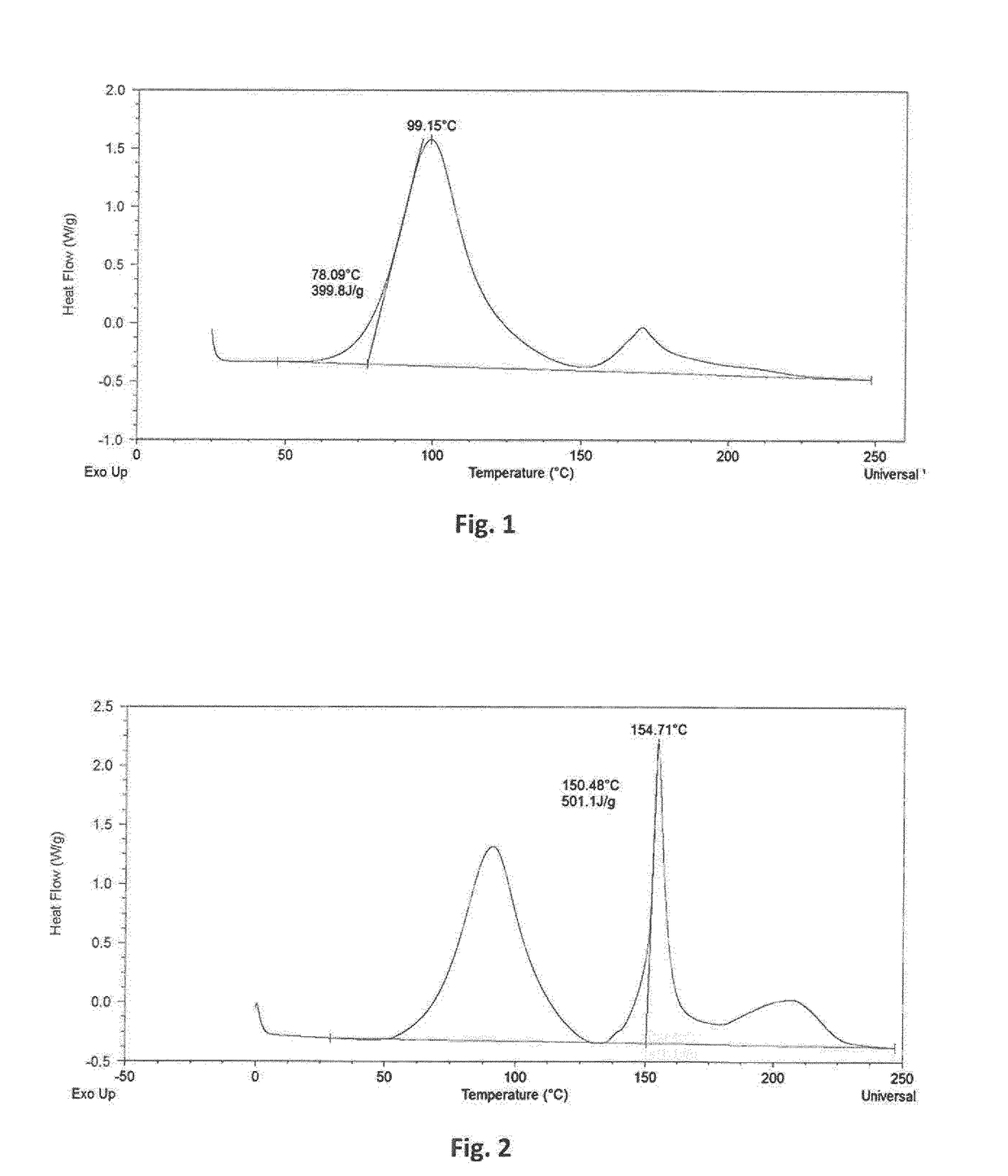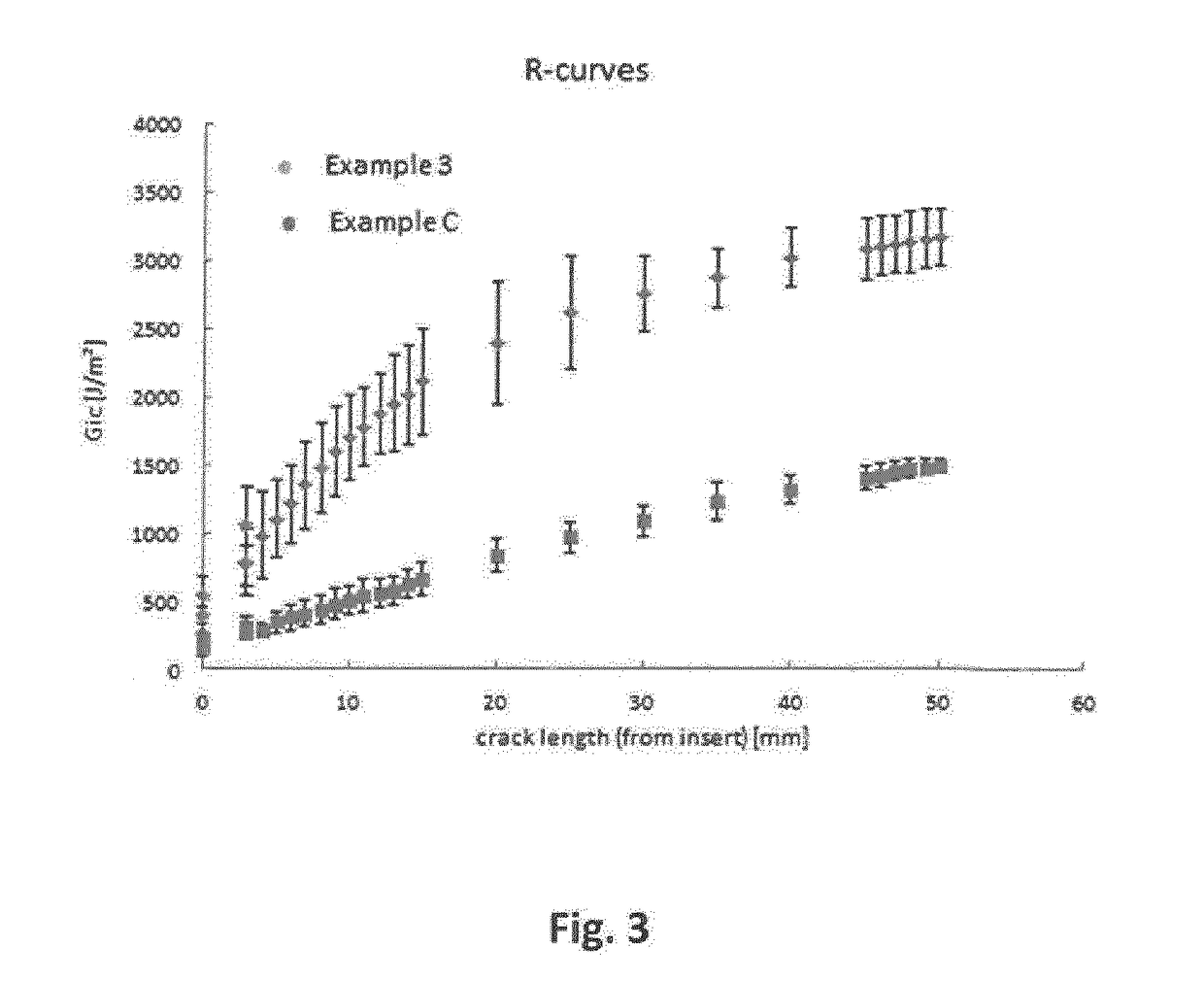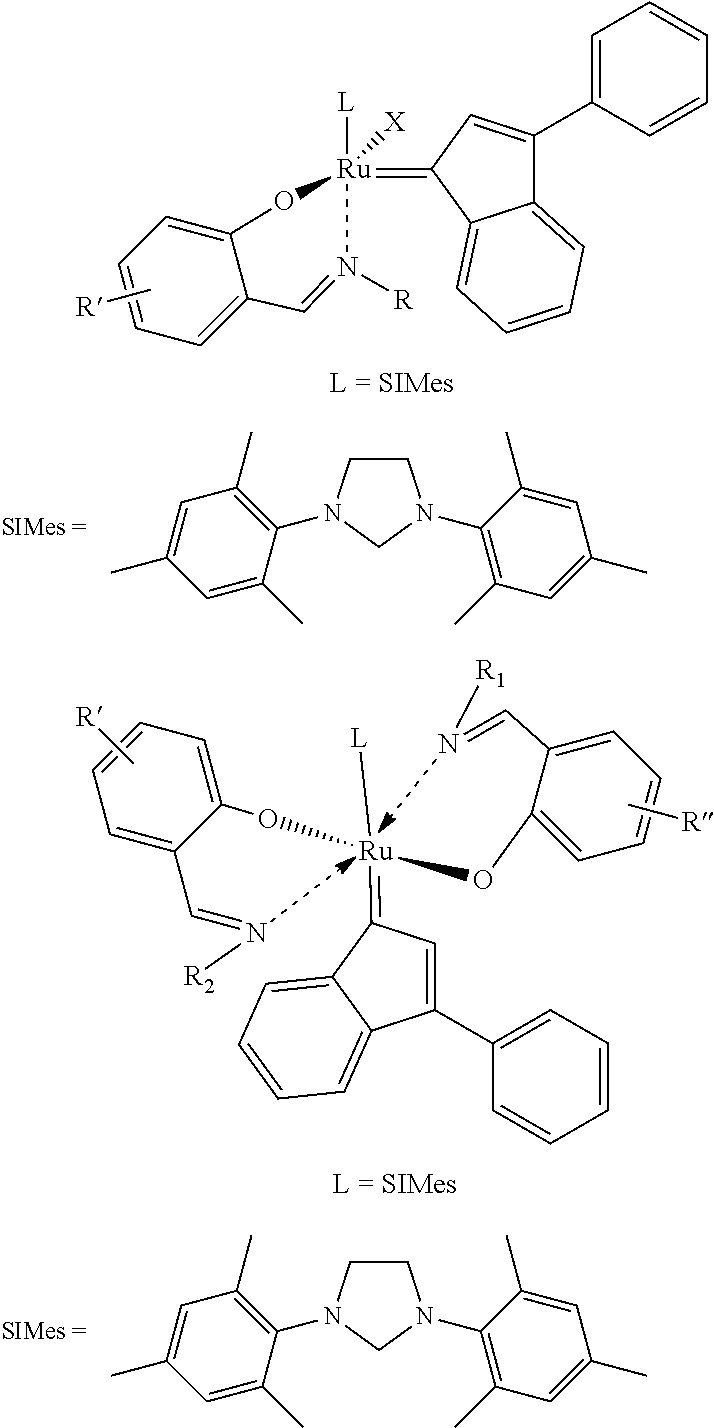Curable Composition and Molded Article Comprising the Composition
- Summary
- Abstract
- Description
- Claims
- Application Information
AI Technical Summary
Benefits of technology
Problems solved by technology
Method used
Image
Examples
examples
[0075]The present invention will now be described more specifically with reference to examples and comparative examples, without however being limited to these examples. It is to be noted that, in the examples and comparative examples, “parts” and “%” are based on weight basis unless otherwise noted.
[0076]Each property in the examples and comparative examples was measured and evaluated in accordance with the following methods:
Three point bending: ISO 14125
Glass transition temperature Tg: ASTM D7028-07e1
Tensile tests: ASTM 3039
Wettability: by visual inspections
Quality assessment: X-ray tomography (nanotom)
Compressive strength: ASTM 3410
Solubility parameters were calculated by using: “HSPiP—Hansen Solubility Parameters in Practice (HSPiP)” software (http: / / hansen-solubility.com) based on Charles Hansen's Hansen Solubility Parameters, A User's Handbook, 2nd Edition from 2007
Tensile fatigue tests: ASTM 3479
Interlaminar fracture toughness (G1c: ISO 15024
Compression after impact: ISO 1835...
example 1
[0109]A DCPD formulation was prepared by mixing 89.9 g of DCPD monomer units, 10 g of 2,2-Bis[(methacryloyloxy)methyl]butyl methacrylate (TMPTMA, Sigma-Aldrich) (10%) and 0.1 wt. % of a tert-butyl peroxide (TBP, Sigma-Aldrich). Then 1.2 g of the ruthenium salicylaldimine catalyst solution comprising 0.02 g of triisopropyl phosphite was added. The resulted solution was stirred 5 min at RT.
[0110]The curing behaviour of the ensuing curable composition was determined by obtaining a DSC thermogram of the composition. The DSC was taken with a Universal V4.5A of TA Instruments and the heating rate was 10° C. / minute.
[0111]FIG. 1 represents the thermograph of the polymerization reaction of the composition of Example 1. The total enthalpy of the polymerization reaction is in the range of 399 J / g which is close to the enthalpy of a ring opening metathesis polymerization (ROMP) of DCPD (380 J / g). A first peak at around 99° C. corresponds to the ROMP while the second peak around a temperature of...
example 2
[0112]A composition was obtained in the same manner as in Example 1, except that 1 wt. % of a tert-butyl peroxide (Sigma-Aldrich) and 30% of TMPTMA was added.
[0113]The curing behaviour of the ensuing curable composition was again determined by obtaining a DSC thermogram of the composition. The DSC was taken with a Universal V4.5A of TA Instruments and the heating rate was 10° C. / minute.
[0114]FIG. 2 represents the thermograph of the polymerization reaction of the composition of Example 2. The first peak corresponds to the ROMP while the second peak around a temperature of 155° C. corresponds to the radical polymerization of TMPTMA. A somewhat larger exothermic peak at around 190° C. is apparent, in accordance with the larger amount of tert-butyl peroxide in the composition. The total enthalpy was 500 J / g by far higher than ROMP of DCPD only
PUM
| Property | Measurement | Unit |
|---|---|---|
| Temperature | aaaaa | aaaaa |
| Pressure | aaaaa | aaaaa |
| Pressure | aaaaa | aaaaa |
Abstract
Description
Claims
Application Information
 Login to View More
Login to View More - R&D
- Intellectual Property
- Life Sciences
- Materials
- Tech Scout
- Unparalleled Data Quality
- Higher Quality Content
- 60% Fewer Hallucinations
Browse by: Latest US Patents, China's latest patents, Technical Efficacy Thesaurus, Application Domain, Technology Topic, Popular Technical Reports.
© 2025 PatSnap. All rights reserved.Legal|Privacy policy|Modern Slavery Act Transparency Statement|Sitemap|About US| Contact US: help@patsnap.com



